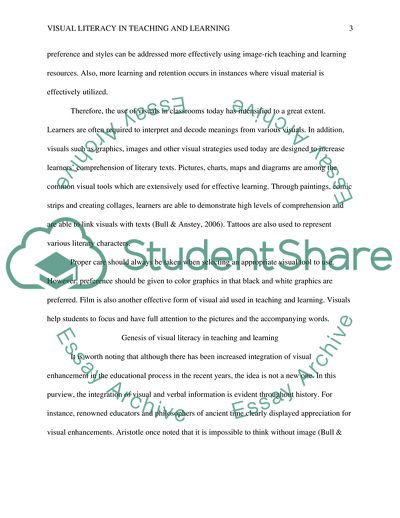Cite this document
(Visual Literacy in Teaching and Learning Essay Example | Topics and Well Written Essays - 1750 words, n.d.)
Visual Literacy in Teaching and Learning Essay Example | Topics and Well Written Essays - 1750 words. https://studentshare.org/education/1767207-write-a-7-page-paper-in-which-you-analyze-an-issue-in-visual-literacy
Visual Literacy in Teaching and Learning Essay Example | Topics and Well Written Essays - 1750 words. https://studentshare.org/education/1767207-write-a-7-page-paper-in-which-you-analyze-an-issue-in-visual-literacy
(Visual Literacy in Teaching and Learning Essay Example | Topics and Well Written Essays - 1750 Words)
Visual Literacy in Teaching and Learning Essay Example | Topics and Well Written Essays - 1750 Words. https://studentshare.org/education/1767207-write-a-7-page-paper-in-which-you-analyze-an-issue-in-visual-literacy.
Visual Literacy in Teaching and Learning Essay Example | Topics and Well Written Essays - 1750 Words. https://studentshare.org/education/1767207-write-a-7-page-paper-in-which-you-analyze-an-issue-in-visual-literacy.
“Visual Literacy in Teaching and Learning Essay Example | Topics and Well Written Essays - 1750 Words”. https://studentshare.org/education/1767207-write-a-7-page-paper-in-which-you-analyze-an-issue-in-visual-literacy.


